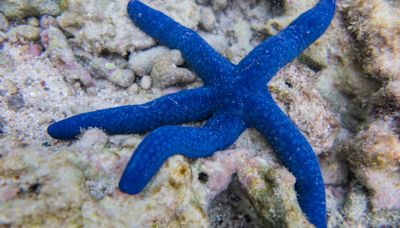Search results
20 hours ago · Starfish or sea stars are star-shaped echinoderms belonging to the class Asteroidea ( / ˌæstəˈrɔɪdiə / ). Common usage frequently finds these names being also applied to ophiuroids, which are correctly referred to as brittle stars or basket stars. Starfish are also known as asteroids due to being in the class Asteroidea.
20 hours ago · Starfish eyes. Scientists have known about the existence of starfish eyes for almost two centuries. They are located, one each, at the tip of each arm. Most starfish, (or more correctly, “sea stars,” since they are not fish) have five legs, but some species have as many as 40 arms (and eyes) in total. Each compound eye has many small lenses ...
3 days ago · Seastars or Starfish (Asteroidea) creep along with their tube feet and eat live prey and dead remains. Brittle and basket stars (Ophiuroidea) use their flexible arms rather than tube feet. Brittles move through the mud, scooping up organic remains; some brittles and the basket stars catch floating organic particles.
4 days ago · Common Types of Starfish. 1. Ochre Sea Star (Pisaster ochraceus) Image source: Pinterest. The Ochre Sea Star is a prominent species found along the Pacific coastline from Alaska to California, thriving in tide pools and rocky shores. These starfish are notable for their varying colors, which include vibrant shades of orange, purple, and brown.
3 days ago · Where is Starfish streaming? Find out where to watch online amongst 45+ services including Netflix, Hulu, Prime Video.
- (33)
- 4
- Akhilesh Jaiswal
4 days ago · “The crown-of-thorns starfish is a marine organism that feeds on algae and bacteria that grow on coral reefs, but it poses a major threat to coral reef ecosystems when it becomes widespread ...
4 days ago · Marthasterias glacialis is a starfish of 30 to 40 cm in diameter but it may be up to 80 cm. Its surface is covered by linear papillae from which arise large conical spines surrounded by numerous pedicellariae easily visible under magnifying glass.



